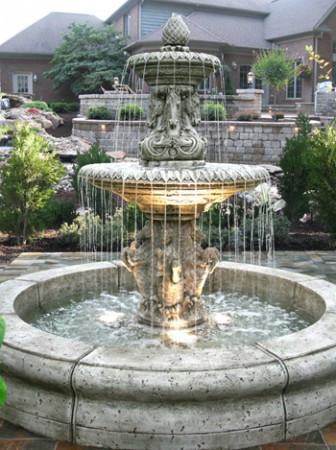Fontaines de la Concorde
Located in the heart of Paris you find Fontaines de la Concorde. These two historic water features are in Place de la Concorde, which is a major public square in the world's most romantic city. Interestingly, this square was originally designed as a moat, which most people visiting are unaware of, but significant to this piece.
History of the Fountain
When the square was originally named Place Louis XV, long before the French Revolution, there was a desire for a fountain to be on display. However, there was not a sufficient water supply to carry out the plans. Place de la Revolution became the name of the square during the French Revolution. King Louis XVI and thousands more were beheaded where the Fontaines de la Concorde now stands today.
When the Canal deL'Ourcq was completed in 1824 to bring water into the core of the city, it became possible for a fountain to be built.
From 1833 to 1840, Jacques Ignace Hittorff worked on the design. His vision was influenced by two Roman fountains. He brought in 12 sculptors to work on the piece. The mushroom-shaped cap perched above the central vasque became the prominent feature. Water jetted from the cap and then cascaded downward. Cast iron was used on the larger figures, a material still very commonly used in creating garden fountains today. These larger figures were painted with gold and bronze paint. The smaller figures were crafted entirely of bronze.
Throughout the piece you appreciate the Atlantic, Mediterranean, coral, fish, shells, pearls, maritime, navigation, astronomy, Rhone and Rhine, flowers, fruit, wheat, grapes, agriculture, tritons, and Nereids. When you first see it, you do not really realize just how detailed it is. It isn't until you start looking further into all of the symbolic pieces that you realize that it is essentially telling a story.
Fountain Symbolism
The Maritime Fountain, which is closest to the River Seine is supposed to represent France's maritime spirit. The Atlantic Ocean and Mediterranean Sea are represented by large semi-nude figures that help support the vasque. The figures in the ship's prow that are surrounded by dolphins symbolize the city itself and the moat that once encircled it.
Figures above the vasque represent spirits of astronomy, maritime, navigation, and commerce. Swans that spout water next to them add a little detail and draw your attention to the Nereids and tritons holding fish in the basin.
In the Fountain of the Rivers closest to Madeleine Church, larger figures represent the Rhine River and Rhone River. The additional figures represent flowers, fruit, wheat, and grapes, which are the four main harvests of France.
The fountains were thoughtfully created so a sheet of water would consistently flow from the vasque, regardless if the water supply was inconsistent or winds were strong. Just inside of the rim is a hidden small channel that moderates water flow. Later in the 20th century, pumps like those seen in outdoor fountains today replaced the historic gravity system.
